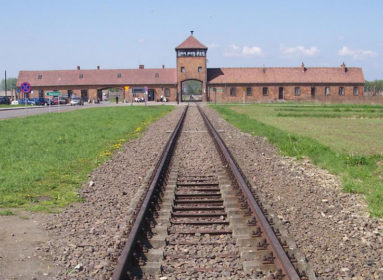In 1964, when Sheldon Harnick wrote the lyrics to Fiddler on the Roof, the creative team was hoping for a one, maybe two, year run.
By Cindy Mindell
Legendary lyricist, librettist, and composer Sheldon Harnick has written for musicals, operas, film songs, television specials, and cabarets. He and composer Jerry Bock are considered one of the most important musical partnerships of the ‘60s, creating some of the most beloved and acclaimed musicals of all time. They wrote The Body Beautiful, Fiorello! (Tony Award and Pulitzer Prize), Tenderloin, and She Loves Me (Grammy Award) before releasing Fiddler on the Roof onto the world’s stage in 1964, along with playwright Joseph Stein.
Harnick will receive The Goodspeed Award for Outstanding Contribution to Musical Theatre at Goodspeed Musicals’ Razzle Dazzle gala on June 14. The award will be presented by longtime friend and two-time Tony Award nominee Tony Roberts (Promises, Promises; They’re Playing Our Song; Victor/Victoria; Cabaret).
Harnick’s work has been well represented on the Goodspeed stage with Fiorello! (1985), She Loves Me (1978), and The Apple Tree (1999). Now, this summer the Goodspeed Opera House will present the 50th anniversary production of Fiddler on the Roof, June 27 – Sept. 7.
A Chicago native, Harnick began writing music in high school. After serving in the military during World War II, he earned an undergraduate degree from Northwestern University School of Music and worked with several orchestras in Chicago before relocating to New York City, where he still lives.
Now 90, Harnick spoke with the Ledger about the creation of Fiddler on the Roof and his long and illustrious career.
Q: Of course, you yourself did not come from the shtetl – so what did you draw upon in writing so emotionally and vividly about that life?
A: In addition to my own personal experiences of being brought up Jewish and bar mitzvahed, I did an enormous amount of research. I read a lot of Jewish history, up to the period we were writing about; I read Life Is with People: The Culture of the Shtetl, which became our bible, and other material pertaining to the time we were writing about. We used an English translation of the Sholem Aleichem story. Joe Stein did know Yiddish and could read the stories in Yiddish.
Part of the talent of a dramatist is to be able to imagine how people feel under certain circumstances. If he doesn’t have that, he cannot write about other people and times and places. You can’t teach it; it’s an innate talent.
Prior to that time, I was in therapy with a terrific therapist, and therapy really develops your ability to think about yourself and others and examine your reactions to emotional situations.
Q: What is your Jewish background and how did it inform your work on Fiddler?
A: My mother was born here. My father’s father came to New York from Austro-Hungary and told his family that he would send for them but he never did. My father came by himself at age 15 and met people who had known his father but he never caught up with him. I think that’s a common story among immigrants. My father started work as a cigar wrapper and decided that he was brighter than that. He got a YMCA high school equivalency degree, borrowed money to go to the University of Illinois dental school, and became a dentist and settled in Chicago. That is also a common story of immigrants.
Yiddish was spoken very rarely in my home, usually when there was a secret my parents wanted to keep from the children. My mother’s Yiddish wasn’t that good so I wasn’t exposed to the language too much.
We did not live in the Jewish neighborhood in Chicago and we had a little synagogue. When I was around bar mitzvah age, I was very conscious of what the older people there were like. I can’t remember specific conversations, but I was very aware of them and especially since we were writing after World War II and some of those people had come from abroad, I couldn’t help but think of what they had been through.
Q: What is the collaboration process like between composer and lyricist?
A: It’s different with each composer. When I worked with Jerry Bock [on Fiddler], we worked in a unique way: once we knew the underlying property of the project, we would work in our respective studios. Jerry would think up musical numbers and when he got each to a certain point, he would put it on tape. He then would send me a tape with eight to 12 or more musical numbers and on any tape, there were maybe one or two ideas that coincided with notions for songs that I had, so I would write lyrics to that music.
It always started with music first. At some point, I would want to do a lyric where I wasn’t constrained by the music, but to have the freedom of writing the lyrics first, and Jerry was capable of writing music to lyrics. After our collaboration ended, I got very curious to see which came first more often – music or lyrics – so I went through all our songs and as best as I could figure out, it was 50/50.
I did a show with Richard Rodgers and he said he was no longer capable of writing music first. I have worked in other ways with other composers.
Q: By some calculations, Fiddler on the Roof is always being produced on a stage somewhere in the world. Did you anticipate this kind of success?
A: When Joe Stein, Jerry Bock, and I set out to do a show based on Sholem Aleichem’s story, we said, “If we do our job right and communicate this beautiful story, maybe we’ll run a year or two.” The first time we realized that the show must be special was when we did a pre-Broadway show in Detroit and there was a newspaper strike so there were no reviews. Next, we went to Washington, D.C. and there were long lines at the box office for tickets and we thought that the people in Detroit must have called their friends and relatives. The same was true in New York and that’s when we thought that maybe it was a special show.
Many people in New York whose families had come from the Old Country were interested in seeing that time and place and it corroborated tales they had heard from their grandparents; it was a picture of a people and place and time.
Q: Outside the U.S., where have you seen Fiddler, and what were some of the differences in the various productions?
A: The show was playing simultaneously in London, Amsterdam, Copenhagen, and Helsinki, and my wife and I went on a tour and our daughter was with us. She was very young and my wife would discipline her by saying, “If you don’t behave, you’ll have to see Fiddler again tonight,” and it worked. We also saw it in Japan.
In Finland, they left out some of Tevye’s monologues and we asked why and they told us that in Finland there’s a tiny Jewish community, maybe 4,000 Jews throughout the country, so that the Jewish aspect is not that important. But what is important is the picture of a small community – Finland – up against a huge community – the Russian bear right next door. They said, if you’ll notice, when we brought in the Russian constable, the actor was 6’5”, representing Mother Russia on stage.
In Japan, they duplicated the New York performance with the same sets, and taped the actors’ eyes so that they would look Caucasian, and the laughter came in places we didn’t expect and not in the places we did expect. What was very meaningful there was that, after World War II, Japanese youth began to drift away from the traditions; before the war, it had been a society where all generations observed the same traditions, but there was such chaos after the war that the youth began to drift away and that concerned and upset the parents.
Q: Sunrise, Sunset got a makeover in 2011 when you wrote two new versions of the song for same-sex weddings. How did that come about?
A: I got a call from Joshua Ellis, who was working for the Dramatists Guild. He told me that he was also an ordained minister and had a request from a Jewish same-sex couple who were getting married and were going to write their own version of the song. As a representative of the guild, he told them that they couldn’t do that but that he would call me to ask him if I would. It turned out to be very easy.
It’s something I believe in. Anybody working in the theater has a lot of gay friends and we recognize the problem they have regarding marriage rights. It was important to me. I heard about that first wedding that used the new version, and afterwards, I got a letter from one of the men telling me how moved they were and how much it meant to them.
Q: What is your view of Jewish influences on American musical theater and the state of the art form today?
A: Through the decades from the early 20th century on, there has been a preponderance of American Jewish composers and lyricists, which is a very interesting phenomenon. Today, there is still a preponderance of Jewish writers – Sondheim, Kander, etc. It’s curious as to why that should be. I myself feel that it’s an outgrowth of a time when Jewish people found they were barred from a lot of professions but not from the entertainment world. So those who could be part of that world found that they could make a living.
What I’m struck by is the fact that it’s still such an attractive form for a lot of very talented young people. I’m on three panels and we give grants to aspiring young theater writers and it’s wonderful to know there is that kind of continuity.
Q: What are you working on now?
A: My wife and I belong to the Lotus Club [one of the oldest literary clubs in the U.S.] and did a reading from a book we created with her photographs and my poems. The York Theatre Company in New York just did readings of three of my shows: one based on a play by Molière, one that flopped off-Broadway in 1960, and a musical based on a Russian play that I abandoned 10 years ago. I worked on all of them and tried to improve them and each reading went wonderfully. My schedule now is dedicated to making sure that each of those three shows goes well and trying to get them into production.
[Editor’s note: The York Theatre Company’s January and February run celebrating Sheldon Harnick was part of its “Musicals in Mufti” series and included Tenderloin, Dragons, Malpractice Makes Perfect, and Smiling, The Boy Fell Dead, as well as a musical revue, Sheldon Harnick’s A World to Win.]
Q: The show is returning to Broadway next year for its fifth revival. Does anything have to be changed to keep the show modern, and are you involved in the production?
A: The only change last time the show was revived was that, because the orchestra conductor was concerned that the orchestrations may have seemed dated, he hired an orchestrator to look at the music and refurbish it. The orchestrator said that he had to do very little to make the orchestrations seem up-to-date and fresh.
This time, I will be at rehearsals to make sure that people sing the right words and do what I can in helping them understand what we were driving at. But they have a wonderful director, Bartlett Sher, so I don’t think they’ll need much help from me.
For more information on the Razzle Dazzle Goodspeed Gala and this summer’s production of Fiddler on the Roof at the Goodspeed Opera House visit www.goodspeed.org or call (860) 873-8668.
Comments? Email cindym@jewishledger.com.








 Southern New England Jewish Ledger
Southern New England Jewish Ledger












